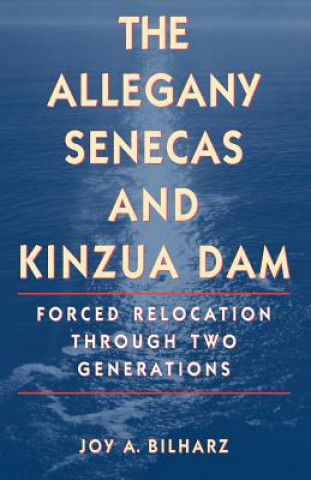
Livraison
Guide d'achat
16 126 809 livres à l’intérieur 175 langues






Afficher toutes les langues (175)
2 047 052 livres numériques à l’intérieur 101 langues






Afficher toutes les langues (101)





Cela ne vous convient pas ? Aucun souci à se faire ! Vous pouvez renvoyer le produit dans les 30 jours
 Bon d’achat
n'importe quelle valeur
Bon d’achat
n'importe quelle valeur
Impossible de faire fausse route avec un bon d’achat. Le destinataire du cadeau peut choisir ce qu'il veut parmi notre sélection.
Allegany Senecas and Kinzua Dam
 Anglais
Anglais
 56 b
56 b
 common.delivery_to
common.delivery_to
Politique de retour sous 30 jours
Ceci pourrait également vous intéresser


In the late 1950s, the U.S. Army Corps of Engineers announced its intention to construct a dam along the Allegheny River in Warren, Pennsylvania. The building of the Kinzua Dam was highly controversial because it flooded one-third of the Allegany Reservation of the Seneca Nation of Indians. Nearly six hundred Senecas were forced to abandon their homes and relocate, despite a 1794 treaty that had guaranteed them those lands in perpetuity. In this revealing study, Joy A. Bilharz examines the short- and long-term consequences of the relocation of the Senecas. Granted unparalleled access to members of the Seneca Nation and reservation records, Bilharz traces the psychological, economic, cultural, and social effects over two generations. The loss of homes and tribal lands was heartwrenching and initially threatened to undermine the foundations of social life and subsistence economy for the Senecas. Over time, however, many Senecas have managed to adapt successfully to relocation, creating new social networks, invigorating their educational system, and becoming more politically involved on local, tribal, and national levels. Today the Kinzua Dam is, according to Bilharz, a "potent symbol" for the Senecas. For the younger generation, faced with a reservation land shortage, it represents powerlessness, providing them with ample reasons to blame their parents and to continue to mistrust the federal and state governments. For the older generation, the risen riverbanks have acquired an almost spiritual significance. In the evenings many continue to wander down to the reservoir banks "to be near where the 'old places' used to be." Joy A. Bilharz is an assistant professor of anthropology at SUNY College at Fredonia. She is currently serving as lead ethnographer and coprincipal investigator of a pan-Iroquoian survey and study commissioned by the National Park Service.
À propos du livre
 Anglais
Anglais
Catégories


 Contact
Contact Comment faire ses achats
Comment faire ses achats



















